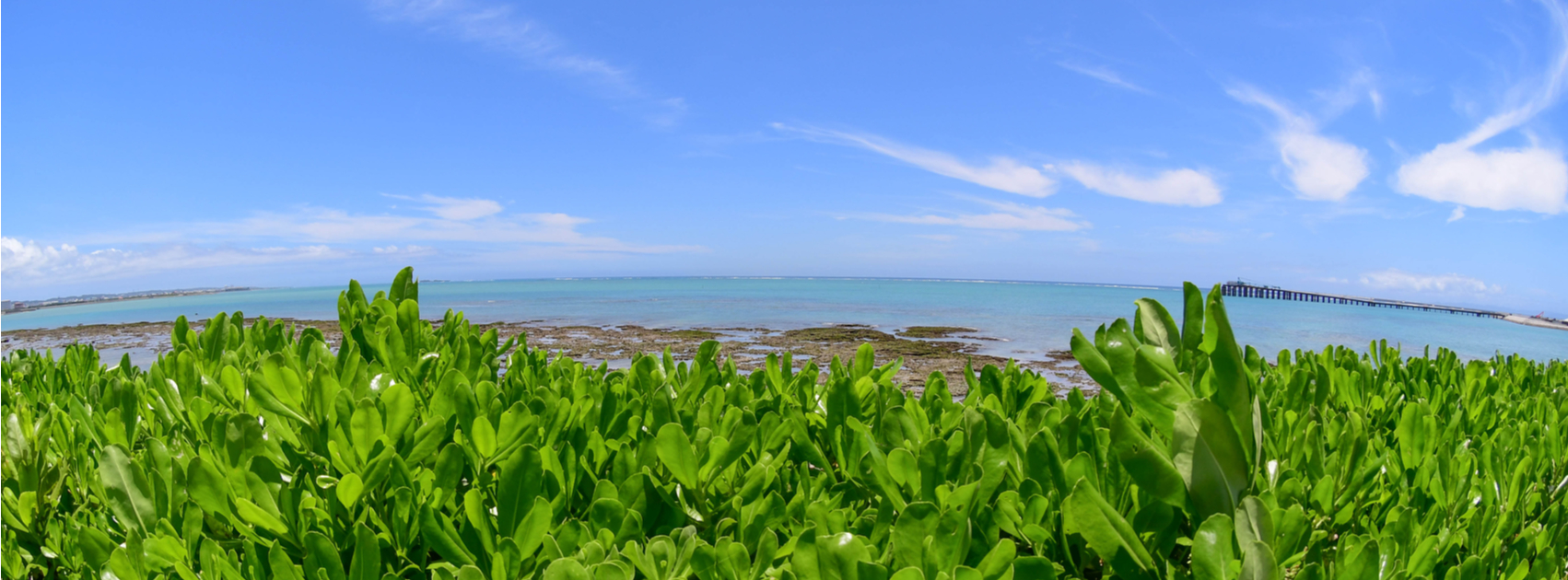Throughout the world, especially in semi-arid regions like the Mediterranean, one of the most common challenges that coastal farmers face is salt.
Contrary to common belief, salt itself isn’t necessarily what harms plants, but excess amounts of it can stunt the growth of, or even kill plants. This makes many regions of the world difficult, if not impossible, for farmers to grow their crops.
But the ever-innovative nation of Israel is working to change that. A country known around the world for its remarkable ability to grow crops in harsh desert environments happens to be a pioneer in Saline Agriculture—the practice of growing crops in salty environments.
Life Near the Dead Sea
Israel is home to the saltiest body of water on earth, the Dead Sea, which is almost 10-times as salty as the ocean. There are no fish in the Dead Sea because the high salt concentration makes it difficult for any sort of living thing to survive, hence its name. But recently, scientists have discovered that the Dead Sea isn’t so dead after all.
The most obvious sign of life revealed itself in the 1980s, when there was a massive red algae bloom in the Dead Sea. Recently, a team of Israeli and German scientists went down to the depths for the first time in scuba gear and discovered species of bacteria that could hold secrets that may change the world.
Salty Switchers
At the bottom of the Dead Sea, the scientists discovered a spring that leaks freshwater up and into the lake, and those springs are home to huge numbers of bacteria and algae, never identified before by science. The species may be small, but their unique adaptation could be the key to unlocking the future of Saline Agriculture.
The currents of freshwater leaking into the lake cause drastic changes in salinity, or the amount of salt dissolved in water. Most organisms are made to handle either saltwater or freshwater—those that can switch, like salmon, must live in brackish water (a mix of saltwater and freshwater) for a while so that their bodies can ease into the adjustment.
Ocean fish can handle high salinity levels because their bodies are designed to process salt—by essentially drinking water regularly, and sweating out the salt. Due to osmosis, saltwater fish can only sweat in salt water, because the environment around them always has more salt than the water in their cells. In freshwater, however, ocean fish would not be able to sweat…so the water would flood their cells and overwhelm them—giving them a heart attack. Freshwater fish, on the other hand, would die in salt water from dehydration just the same as a person would from drinking too much seawater. Our bodies just can’t handle that much salt!
There are some fish, like salmon, that can survive in both environments…but it takes time to force their bodies to adjust to the changes in salinity. Unlike these fish, the different bacteria that live in the Dead Sea can adapt almost instantly.
The question is, how?
Only God knows. Scientists are still ironing out the details, but if they can figure out how the mechanism works in these Dead Sea bacteria, they may be able to bioengineer the same mechanism into crops which are generally salt-intolerant.
This knowledge would help Israel and countries around the world produce more food and make use of more land that would otherwise be too salty to grow crops.
How Does Salt Affect Agriculture?
In the United States alone, soil salinity can reduce up to 25% of crop yields, according to the US Department of Agriculture.
Salt finds its way into the soil naturally, as wind can carry salt particles from the ocean into the land, and erosion can wash the salt and other minerals from rocks into groundwater sources that take it to farmland.
Humans also contribute to salinity levels, especially after using salt to melt snow and ice on roads and sidewalks—the melted snow will wash the salt into nearby grass, the plants may then become yellow, or especially brittle.
This is because most plants have a hard time dealing with excess levels of salt. When there’s too much salt in the soil, some plants native to saline (salty) environments can automatically turn off their water absorbing systems because they know that too much salt will be toxic, but other plants don’t have that capability, and they will absorb the excess salt—becoming damaged by it.
How Does Salt Hurt Plants?
Water in the cells of all living things is moved by a process called osmosis, which is transferring liquids from one cell membrane to another. For most organisms, osmosis also involves salt because salt draws water. It’s essential to maintain a balance of salt and water, so that the organism can function properly—too much or too little salt can cause damage or breakdowns.
Salinity Tolerance Levels Explained
Plants also use osmosis on a larger scale to take up water through their roots, and a healthy plant will stand upright (known as turbid) if it has enough water to “pump” through its cells, so to speak.
If the stems of plants are pipes, salt is a corrosive that weakens them inside and out by draining liquid from the healthy cells in the walls of the pipe. This explanation is why most plants begin to wilt when exposed to salt that gets sprayed to melt snow, for instance.
- Plants with low salt tolerance will experience these symptoms relatively quickly, and may not survive the salt exposure.
- Plants that are moderately salt-tolerant have adapted to detect salt in soil and periodically stop growing until they detect that the salinity in the soil has decreased.
- Some plants, like Florida Mangroves have special adaptations to help them live in brackish (slightly salty) water. They can process excess salt safely, by either filtering out salt through their roots or pumping it out through their leaves.
Developing Salt Tolerance in Crops
According to an Australian study, wheat and corn are relatively salt-tolerant already, whereas rice is salt sensitive. That is to say, in normal fields, the damage salt does to wheat and corn is relatively minimal. But in the future, Israel hopes to grow wheat and other crops that could survive as the Florida Mangroves do in brackish water.
Salt tolerance and vulnerability in plants has never been fully understood by science, but studies around the world are bringing us closer to unlocking the secrets. Today, scientists are experimenting with genetic modification of plants, by cross-breeding or injecting DNA genes into crops such as wheat to create even higher salt tolerance. The progress has been slow and inconclusive, but the recent discoveries in the Dead Sea might lead them in a new and improved direction.
If Israel is successful in developing salt-tolerant, or halophyte, crops, then planting them in high numbers could eventually to reclaim saline soils so that other plants—even the salt intolerant species—can thrive.
Restoring the Land for Israel and Beyond
A similar transformation is already in progress in the desert, thanks to planting olive trees in the Negev Desert. This special project led by My Olive Tree is having a huge impact on transforming the desert as envisioned by the Holy Bible. Find out more about how we’re restoring Israel, and how you can get involved by checking out our sponsorship opportunities!







